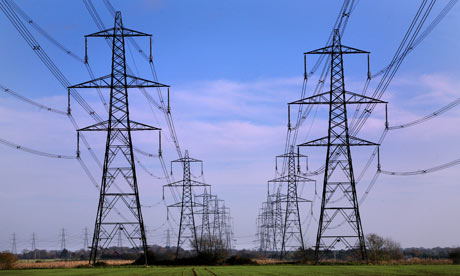Budget 2009: Has the government begun to recognise the scale of the challenge?
The budget confirmed the acceptance of the Committee on Climate Change's recommendation for carbon emissions in 2020. The UK will have to reduce its CO2 output by about 110m tonnes by 2020, equivalent to a 21% reduction on actual emissions in 2005 (and 34% on the 1990 figure). The proposed rate of emissions reduction is far faster than the UK has achieved thus far and the chancellor’s budget shows the government has started to recognise the scale of the challenge.
***
The committee told the government in December last year that the most important prospective source of cuts in greenhouse gases lay in the ‘decarbonisation’ of electricity generation. This can happen by increasing the percentage of renewable electricity, by capturing carbon at power stations and from switching to low-carbon fuels such as nuclear and gas.
The budget had incentives to encourage all of these changes. Most importantly, it improved the prospects for offshore wind. The budget recognised that the decline in bank credit, the falling price of carbon permits, and the sharp drop in the price of fossil fuels have made offshore projects increasingly difficult to fund. The worrying prospect that the 400-turbine London Array might be abandoned in the next few weeks forced the chancellor to increase unexpectedly the subsidy for electricity generated offshore.
He claims it is new government support. This isn’t quite right: we will all be paying through higher electricity bills. The new subsidy encourages the developers of this vital scheme to place their turbine orders in the next twelve months. My guess is that the government may not quite have done enough and that further fiscal bribery will be needed to get this vital project completed. This scheme, the largest offshore wind farm in the world, cannot be allowed to fail if the UK is to achieve the necessary ten-fold increase in renewables generation by 2020.
The second major measure from Darling was an unexpectedly large increase in the money going into carbon capture and storage. Energy experts have warned that the UK would not be ready to install capture technology on power stations until after the crucial 2020 date, meaning that the government’s carbon budget would be likely to be breached. So £90m is offered for ‘preparatory studies’ by the electricity generators to try to encourage more rapid progress.
There was also a remarkably vague promise to fund a further three working demonstrations of carbon capture in addition to the single contract that is likely to be awarded to the new Kingsnorth power station. We urgently need more detail on this policy change.
There were some crumbs offered to the micro-renewables industry to stop it collapsing entirely in the next twelve months. £45m is not going to go far, perhaps putting solar panels on 5,000 homes compared with the millions around the rest of Europe.
By contrast, energy efficiency measures were emphasised by the chancellor. He promised £400m for research and development, although it is unclear how much of this money is additional to existing allocations. We are definitely seeing progress in government commitments to financing fundamental work in energy efficiency and power generation. But, for comparison, the UK spends about £2.5bn a year on basic defence research and development, over six times as much as the new figure for energy.
The Committee on Climate Change’s other priorities for meeting the carbon budget included an emphasis on low-carbon vehicles and the chancellor has already announced some remarkably detail-lacking plans for subsidising electric cars. In the budget he also committed to spending £20m installing a network of battery-charging points in a couple of UK cities. This is a good start, but he would have been better changing the harsh tax treatment of electric delivery vans. This is the single measure that would do most to get silent, non-polluting vehicles on our urban streets.
He also made some perverse changes to car tax. The owners of existing cars that were among the most efficient when they bought them will now pay higher rates of duty. Owners who thought they were being virtuous are now going to be penalised. The Treasury’s not-so-subtle reasoning must be that the car tax revenues, which are tied to the carbon emissions of the vehicle – providing about 6% of all government receipts last time I looked – will start declining sharply as more and more people buy ultra-efficient cars.
As for the extraordinary car scrappage scheme, the less said the better. It would have been far more effective to pay people to tear up their driving licences and promise to use public transport.
Two further measures were also the opposite colour to green: the excise duty on lorries was held down to placate the road transport industry. And a number of incentives encouraged more drilling for oil and the extraction of the last barrels from existing fields.
Nowhere was the inconsistency between these proposals and overall emissions reduction noted by the chancellor.
This article was originally published in the Guardian on Wednesday 22 April 2009.
